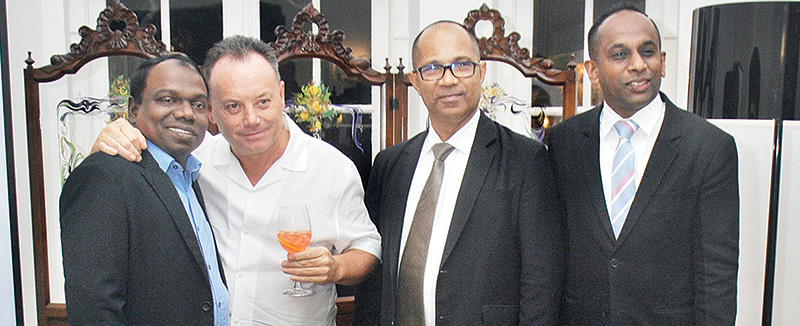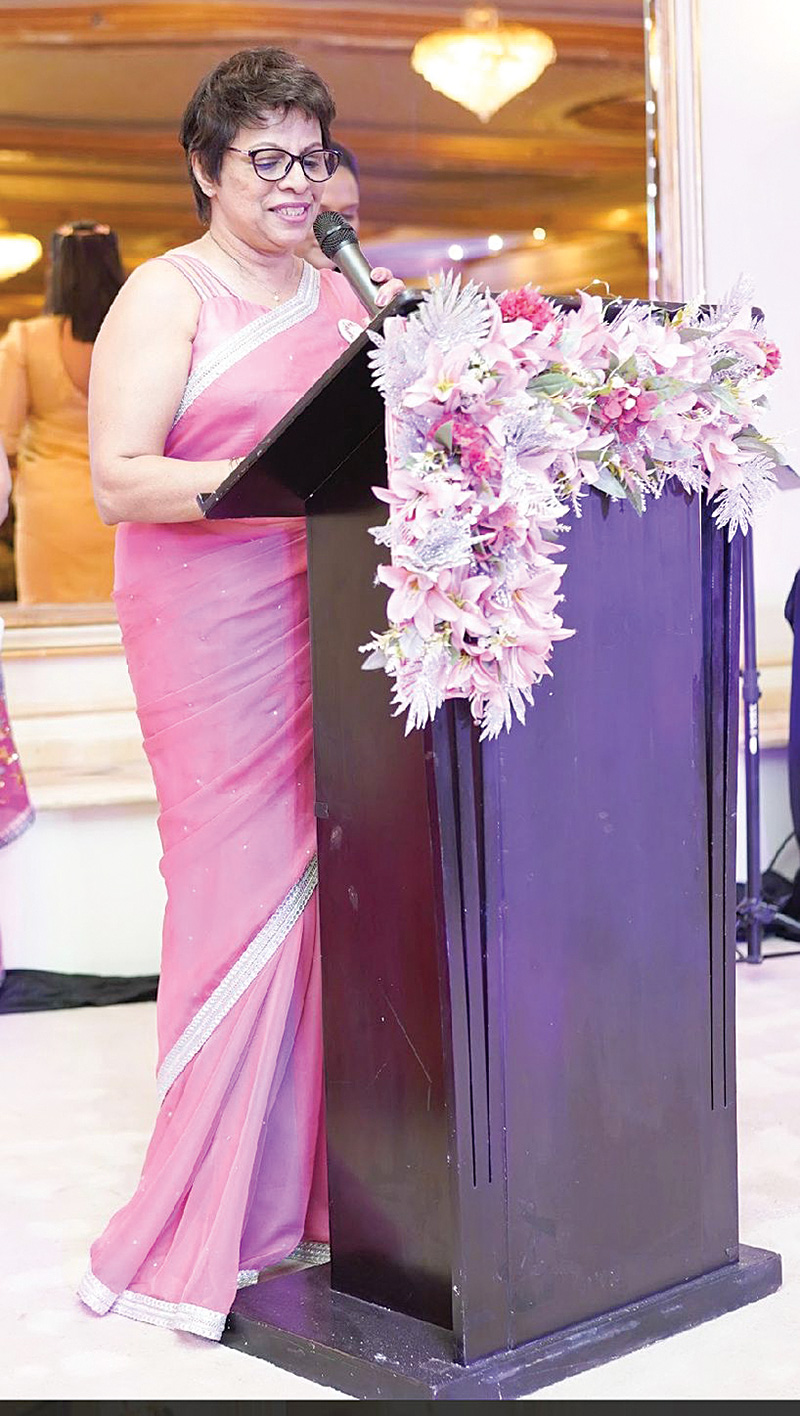Life style
Gehan makes Sri Lanka proud with ‘The Billionaire’

The gifted and versatile actor Gehan Cooray makes Sri Lanka proud with his Hollywood movie “Billionaire” . This movie was awarded at the prestigious Burbank International film recently.
This film was Gehan Cooray’s very own adaptation of George Bernard Show’s play ‘The Millionairess’ Gehan’s milestone in producing, writing the screen play and his portrayal in the title role were great achievements.
Based in Los Angeles, Gehan Cooray is also an actor, independent filmmaker and a classical singer. The film ‘The Billionaire’ was officially submitted to the Academy of Motion Picture Arts and Sciences, and to the Hollywood Foreign Press Association in late 2020, after becoming eligible for both Oscar and Golden Globe awards nominations.
by Zanita Careem
How did you get involved in the movie The Billionaire”
At the tender age of three , my mother introduced me to Classic Hollywood films like ‘My Fair Lady’, ‘The Sound of Music’ and ‘Mary Poppins’, which left an indelible impression on my mind. Throughout my childhood, I was struck by how movies could offer the viewer a form of audio-visual escapism that was practically unrivalled. However, since there was no English film industry in Sri Lanka, I grew up performing on the stage, and didn’t seriously consider becoming a filmmaker until I attended the University of Southern California, in Los Angeles.
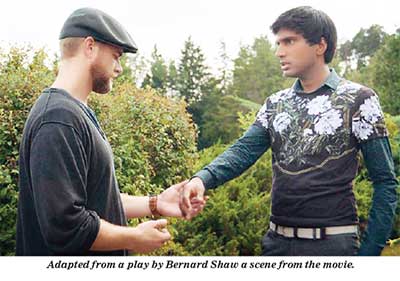 USC of course has the best cinematic arts school in the world, producing such Hollywood luminaries as George Lucas. Although I majored in Theatre and Psychology, I took as many cinema classes as I possibly could, and discovered a knack for filmmaking through class projects and such. It was several years after graduating from university, however, that a chance meeting with the famous director Jon Favreau in Hollywood set me on my current trajectory. Seeing my USC sweatshirt, he asked me if I was a filmmaker. My instinct at the time was to say “I’m an Actor and a Singer, but not really a filmmaker” – and yet, I subsequently said to myself….”If Mr. Favreau thinks I look like I could be making films, on top of being a performer, why not give it a go, since I’ve had such an excellent foundation at USC anyway?”
USC of course has the best cinematic arts school in the world, producing such Hollywood luminaries as George Lucas. Although I majored in Theatre and Psychology, I took as many cinema classes as I possibly could, and discovered a knack for filmmaking through class projects and such. It was several years after graduating from university, however, that a chance meeting with the famous director Jon Favreau in Hollywood set me on my current trajectory. Seeing my USC sweatshirt, he asked me if I was a filmmaker. My instinct at the time was to say “I’m an Actor and a Singer, but not really a filmmaker” – and yet, I subsequently said to myself….”If Mr. Favreau thinks I look like I could be making films, on top of being a performer, why not give it a go, since I’ve had such an excellent foundation at USC anyway?”
I started with a few short films, which got into some big film festivals in Los Angeles and Palm Springs. Having received that kind of recognition for my work, my mother felt it was time for me to take the plunge and make a feature length film – which is what led to “THE BILLION AIRE”. I wanted to make a film that hearkened back to the elegance and sophistication of the Old Hollywood films I grew up watching.
How long did you take to make research and make the film?
It took several years. It was definitely a marathon, not a sprint, and it sometimes felt like I would never reach the finish line, honestly, but by the Grace of God, I finally did, overcoming all kinds of obstacles that seemed insurmountable to the point of despair at the time – but my Patience and Perseverance won out.
What were the key challenges in making ‘The Billionaire’
I had a number of people try to take advantage of me and bleed me dry in the most unscrupulous of ways, and so I would say the key challenge was finding the right collaborators whom I could really trust, and who had the film’s best interests in mind, versus their own best interests. This is always a challenge when you are producing a film as an independent filmmaker.
On a more artistic note, editing the film also proved to be a challenge. The first cut of the film was 2 hours 40 minutes. It took me a long time to find an editor who could help me bring the film under two hours, without sacrificing the main essence and thrust of the story. It was someone at Warner Bros. Studios who referred me to such an editor, who understood what I was trying to accomplish with the film, and respected my vision, without merely slicing and dicing the footage.
Working and producing the movie in Hollywood, tell us your first time experience
The difference between making a short film and making a feature film is like the difference between crawling and running a marathon, and so the short films I had so successfully made prior to THE BILLIONAIRE did not prepare me for what was to come. What helped me from beginning to end, however, was the strength of my artistic convictions – I was not just trying to make a movie, as so many do, but create a work of art that had literary, dramatic and musical merit. The whole process might have been somewhat intimidating, had I not had believed so completely in what I was doing.
Is digital technology and opportunity or a threat?
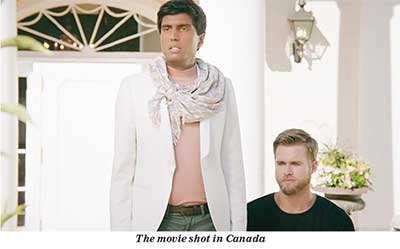 Digital technology is certainly an opportunity for so many young creative people, but it can also be a threat because anyone can make anything and upload it online – regardless of their level of education or their artistic abilities. Hence, there is such an overabundance of content available online digitally, that finding a work of quality these days can be akin to finding a needle in a haystack. I am still adamant about releasing my film in cinemas first, before taking the digital route, because there is a level of quality control and discernment in cinemas that sadly can’t be found in the digital sphere.
Digital technology is certainly an opportunity for so many young creative people, but it can also be a threat because anyone can make anything and upload it online – regardless of their level of education or their artistic abilities. Hence, there is such an overabundance of content available online digitally, that finding a work of quality these days can be akin to finding a needle in a haystack. I am still adamant about releasing my film in cinemas first, before taking the digital route, because there is a level of quality control and discernment in cinemas that sadly can’t be found in the digital sphere.
What inspired you to produce and star in ‘The Billionaire’?
I wanted to produce and star in a feature film that portrayed South Asians like myself in an empowered manner, first and foremost. Too often, we see South Asians portrayed in a somewhat subservient manner in Western cinema. My Godmother in Colombo, Nishanthi Perera Pieris, had told me about George Bernard Shaw’s play “The Millionairess”, which was quite progressive in the 1930s, depicting an empowered and thoroughly independent female character. I realized that, by changing the gender and turning the 1930s millionairess into a 21st century billionaire of South Asian descent, I could represent my race in a truly formidable manner. Also, since I grew up watching “My Fair Lady”, which was also adapted from a George Bernard Shaw play, I felt an immense affinity to the kind of language that Shaw utilizes. It was a secondary goal of mine to showcase to the world that a South Asian actor like me could speak the Queen’s English as resplendently and majestically as any Caucasian actor.
What projects do you have coming up?
I am working on adapting an operetta to the big screen, as well as another play which is a more dramatic version of an old fairytale. I wouldn’t be able to produce either project as an independent filmmaker however. I would need to partner with a studio. On a more independent level, I am envisioning a project that might be shot in Sri Lanka, with a big Hollywood actor or actress starring in the film alongside me. Hopefully all of the above comes to fruition.
I have recorded my first album, which will be released in 2021. It was produced by Grammy Award winning musician Hussain Jiffrey, and features Operatic Arias, French and Italian Classical Melodies, as well as Old English Songs from the late 19th century and early 20th century Broadway Musicals. I can’t wait to share this with the world.
Why the movie stresses on Asexuality.
The movie stresses on Asexuality because I myself identify as an Asexual gentleman. This is something which most people are completely unaware of, because so much emphasis is placed on Heterosexuality and Homosexuality. I wanted audiences to become aware of the fact that not everyone likes, needs, or wants sex. I for one, most certainly do not. In THE BILLIONAIRE, for example, the title character whom I portray is attracted to men romantically, but not sexually, which means that none of his relationships are ever consummated – not even after marriage. Since this reflects my own disposition, I felt it was important to showcase to the world at large that two people can fall in love and even get married, but remain essentially pure and chaste. This is a beautiful and sublime thing.
In George Bernard Shaw’s original play ‘The Millionairess’, the title character’s pride and self-worth seemed to derive almost entirely from her wealth and status. I thought this was a rather flimsy characterization, especially in the 21st century, when the Class system is considered somewhat archaic, and so I thought it would be dramatically and psychologically fascinating if my character – THE BILLIONAIRE – drew HIS pride and self-worth as much from his chastity and purity, as he did from his status and wealth. An Asexual person is quasi-angelic, in the sense that such an individual has no desire for a sexual connection with anyone, and I felt this was a much stronger reason for my character to be so proud – above and beyond being rich and upper class.
A lot of people in the LGBTQ community have role models in the media to look up to these days, but Asexual individuals do not have those same role models as yet, unfortunately, and I thought it was high time we changed that.
Life style
Celebration of taste, culture and elegance

Italian Cuisine Week
This year’s edition of Italian Cuisine Week in Sri Lanka unfolded with unmistakable charm, elegance and flavour as the Italian Embassy introduced a theme that captured the very soul of Italian social life ‘Apertivo and’ Stuzzichini’ This year’s celebration brought together diplomats, food lovers, chefs and Colombo’s society crowd for an evening filled with authenticity, refinement and the unmistakable charm of Italian hospitality.
Hosted at the Italian ambassador’s Residence in Colombo, the evening brought Italy’s golden hour ritual to life, embracing the warmth of Mediterranean hospitality and sophistication of Colombo social scene.
The ambience at the residence of the Italian Ambassador, effortlessly refined, evoked the timeless elegance of Milanese evening culture where ‘Apertivo’ is not just a drink , but a moment of pause, connection and pleasure. Guests were greeted with the aromas of apertivo classics and artisanal stuzzichini,curated specially for this edition. From rustic regional flavours to contemporary interpretations the embassy ‘s tables paid homage to Italy’s diverse culinary landscape.
, Italy’s small bites meant to tempt the palate before meal. Visiting Italian chefs worked alongside Colombo’s leading culinary teams to curate a menu that showcased regional authenticity though elegant bite sized creations. The Italian Ambassador of Italy in Sri Damiano Francovigh welcomed guests with heartfelt remarks on the significant of the theme, highlighting how “Apertivo”embodies the essence of Italy’s culinary identity, simple, social and rooted in tradition.
Sri Lanka’s participation in Italian Cuisine Week for ten consecutive years stands as a testament to the friendship between the two countries. This year focus on ‘Apertivo’ and ‘Stuzzichini’ added a fresh, dimension to that relationship, one that emphasised not only flavours, but shaped cultural values of hospitality, family and warmth. This year’s ‘Apertivo’ and “Stuzzichini’ theme brought a refreshing twist to Italian Cuisine Week. It reminded Sri Lankan guests t hat sometimes the most memorable culinary experiences come not from elaborate feasts but from the simplicity of serving small plates with good company.
Italian Cuisine Week 2025 in Sri Lanka may have showcased flavours, but more importantly it showcased connection and in the warm glow of Colombo’s evening Apertivo came alive not just as an Italian tradition.
(Pix by Dharmasena Wellipitiya)
By Zanita Careem
The Week of Italian Cuisine in the World is one of the longest-running thematic reviews promoted by the Italian Ministry of Foreign Affairs and International Cooperation. Founded in 2016 to carry forward the themes of Expo Milano 2015—quality, sustainability, food
safety, territory, biodiversity, identity, and education—the event annually showcases the excellence and global reach of Italy’s food and wine sector.
Since its inauguration, the Week has been celebrated with over 10,000 events in more than 100 countries, ranging from tastings, show cooking and masterclasses to seminars, conferences, exhibitions and business events, with a major inaugural event hosted annually in Rome at the Farnesina, the HQ of the Italian Ministry of Foreign Affairs and International Cooperation.
The 10th edition of the Italian Cuisine Week in the World.
In 2025, the Italian Cuisine Week in the World reaches its tenth edition.
The theme chosen for this anniversary is “Italian cuisine between culture, health and innovation.”
This edition highlights Italian cuisine as a mosaic of knowledge and values, where each tile reflects a story about the relationship with food.
The initiatives of the 10th Edition aim to:
promote understanding of Italian cuisine, also in the context of its candidacy for UNESCO Intangible Cultural Heritage;
demonstrate how Italian cuisine represents a healthy, balanced, and sustainable food model, supporting the prevention of non-communicable diseases, such as cardiovascular diseases and diabetes;
emphasize the innovation and research that characterize every stage of the Italian food chain, from production to processing, packaging, distribution, consumption, reuse, and recycling
The following leading hotels in Colombo Amari Colombo, Cinnamon Life, ITC Ratnadipa and The Kingsbury join in the celebration by hosting Italian chefs throughout the Week.
- Jesudas, chef Collavini,Travis Casather and Mahinda Wijeratne
- Barbara Troila and Italian Ambassador Damiano F rancovigh
- Janaka Fonseka and Rasika Fonseka
- Mayor Balthazar and Ambassador of Vietnam,Trinh Thi Tam
- Anika Williamson
- Alberto Arcidiacono and Amber Dhabalia
- Thrilakshi Gaveesha
- Dasantha Fonseka and Kumari Fonseka
Life style
Ethical beauty takes centre stage

The Body Shop marked a radiant new chapter in Sri Lanka with the opening of its boutique at One Galle Face Mall, an event that blended conscious beauty, festive sparkle and lifestyle elegance. British born and globally loved beauty brand celebrates ten successful years in Sri lanka with the launch of its new store at the One Galle Face Mall. The event carried an added touch of prestige as the British High Commissioner Andrew Patrick to Sri Lanka attended as the Guest of honour.
His participation elevated the event highlighting the brand’s global influence and underscored the strong UK- Sri Lanka connection behind the Body Shop’s global heritage and ethical values.
Celebrating ten years of the Brand’s presence in the country, the launch became a true milestone in Colombo’s evolving beauty landscape.
Also present were the Body Shop Sri Lanka Director, Kosala Rohana Wickramasinghe, Shriti malhotra, Executive chairperson,Quest Retail.The Body shop South Asia and Vishal Chaturvedi , Chief Revenue Officer-The Body South Asia The boutique showcased the brand’s
complete range from refreshing Tea Tree skin care to the iconic body butters to hair care essentials each product enhancing the Body Shop’s values of cruelty ,fair trade formulation, fair trade ingredients and environmentally mindful packaging.
The store opening also unveiled the much anticipated festive season collection.
With its elegant atmosphere, engaging product experiences and the distinguished present of the British High Commissioner, it was an evening that blended glamour with conscience With its fresh inviting space at Colombo’ premier mall, the Body Shop begins a a new decade of inspiring Sri Lankan consumers to choose greener beauty.
Life style
Ladies’ Night lights up Riyadh

 The Cultural Forum of Sri Lanka in Riyadh, Saudi Arabia brought back Ladies’ Night 2025 on November 7 at the Holiday Inn Al Qasr Hotel. After a hiatus of thirteen years, Riyadh shimmered once again as Ladies’ Night returned – an elegant celebration revived under the chairperson Manel Gamage and her team. The chief guest for the occasion was Azmiya Ameer Ajwad, spouse of the Ambassador of Sri Lanka to K. S. A. There were other dignitaries too.
The Cultural Forum of Sri Lanka in Riyadh, Saudi Arabia brought back Ladies’ Night 2025 on November 7 at the Holiday Inn Al Qasr Hotel. After a hiatus of thirteen years, Riyadh shimmered once again as Ladies’ Night returned – an elegant celebration revived under the chairperson Manel Gamage and her team. The chief guest for the occasion was Azmiya Ameer Ajwad, spouse of the Ambassador of Sri Lanka to K. S. A. There were other dignitaries too.
The show stopper was Lisara Fernando finalist from the voice Sri Lankan Seasons, wowed the crowd with her stunning performances. The excitement continued with a lively beauty pageant, where Ilham Shamara Azhar was crowned the beauty queen of the night. Thanks to a thrilling raffle draw, many lucky guests walked away with fabulous prizes, courtesy of generous sponsors.
The evening unfolded with a sense of renewal, empowerment and refined glamour drawing together the women for a night that was both historic and beautifully intimate. From dazzling couture to modern abayas, from soft light installation to curated entertainment, the night carried the unmistakable energy.
Once a cherished annual tradition, Ladies’ Night had long held a special space in Riyadh’s cultural calendar. But due to Covid this event was not held until this year in November. This year it started with a bang. After years Ladies’ Night returned bringing with a burst of colour, confidence and long-awaited camaraderie.
It became a symbol of renewal. This year began with a vibrant surge of energy. The decor blended soft elegance with modern modernity cascading its warm ambient lighting and shimmering accents that turned the venue into a chic, feminine oasis, curated by Shamila Abusally, Praveen Jayasinghe and Hasani Weerarathne setting the perfect atmosphere while compères Rashmi Fernando and Gayan Wijeratne kept the energy high and kept the guests on their toes making the night feel intimate yet grand.
Conversations flowed as freely as laughter. Women from different backgrounds, nationalities and professions came together united by an unspoken bond of joy and renewal. Ladies’ Night reflected a broader narrative of change. Riyadh today is confidently evolving and culturally dynamic.
The event celebrated was honouring traditions while empowering international flair.
As the night drew to a close, there was a shared sense that this event was only the beginning. The applause, the smiles, the sparkles in the air, all hinted at an event that is set to redeem its annual place with renewed purpose in the future. Manel Gamage and her team’s Ladies’ Night in Riyadh became more than a social occasion. It became an emblem of elegance, and reflected a vibrant new chapter of Saudi Arabia’s capital.
Thanks to Nihal Gamage and Nirone Disanayake, too, Ladies’ night proved to be more than event,it was a triumphant celebration of community, culture and an unstoppable spirit of Sr Lankan women in Riyadh
In every smile shared every dance step taken and every moment owned unapologetically Sr Lankan women in Riyadh continue to show unstoppable. Ladies’ Night is simply the spotlight that will shine forever .This night proved to be more than an event, it was a triumphant celebration of community, culture and the unstoppable spirit of Sri Lankan women in Riyadh.
In every smile shared, every dance steps taken and every moment owned unapologetically Sri Lankan women in Riyadh continue to show that their spirit is unstoppable. Ladies’ Night was simply the spotlight and the night closed on a note of pride!
- Evening glamour
- Different backgrounds, one unforgettable evening
- Shamila lighting traditional oil lamp while chief guest Azmiya looks on
- Unity in diversity
- capturing the spirit of the evening
- Radiant smiles stole the spotlight
- Every nationality added its own colour and charm
- Elegance personified
- Crowning the beauty queen
- Chairperson Manel Gamage welcoming guests
- Captivating performances
- Royal moment of poise and power
- Elegance and style in every form
-
News5 days ago
Lunuwila tragedy not caused by those videoing Bell 212: SLAF
-

 News4 days ago
News4 days agoLevel III landslide early warning continue to be in force in the districts of Kandy, Kegalle, Kurunegala and Matale
-
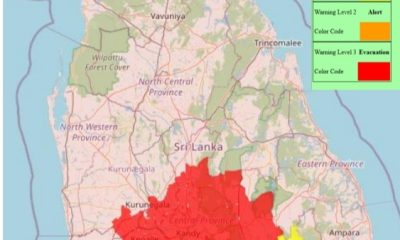
 Latest News6 days ago
Latest News6 days agoLevel III landslide early warnings issued to the districts of Badulla, Kandy, Kegalle, Kurunegala, Matale and Nuwara-Eliya
-

 Features6 days ago
Features6 days agoDitwah: An unusual cyclone
-

 Latest News7 days ago
Latest News7 days agoUpdated Payment Instructions for Disaster Relief Contributions
-

 News2 days ago
News2 days agoCPC delegation meets JVP for talks on disaster response
-

 Business2 days ago
Business2 days agoLOLC Finance Factoring powers business growth
-

 News2 days ago
News2 days agoA 6th Year Accolade: The Eternal Opulence of My Fair Lady


